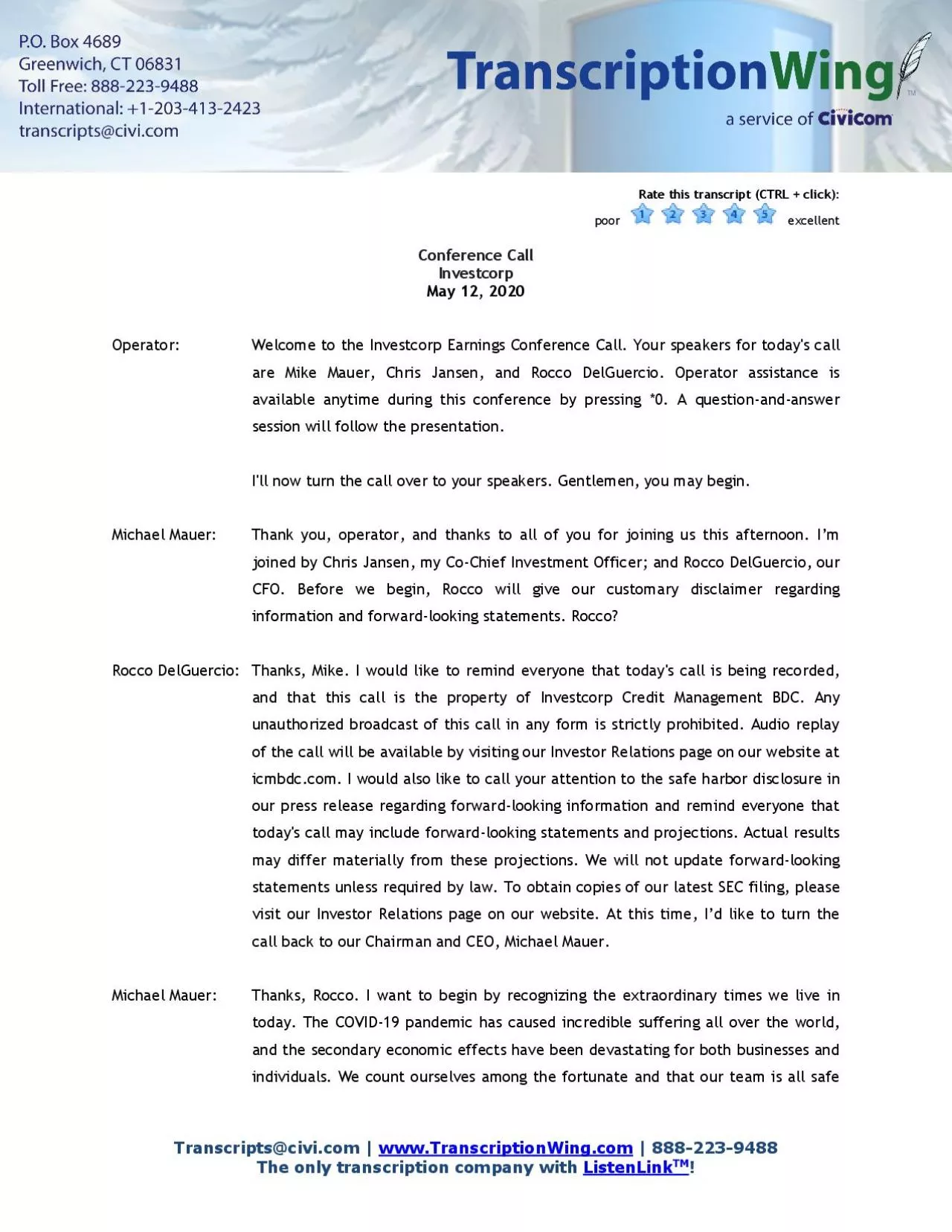PDF-Transcriptscivicom wwwTranscriptionWingcom 8882239488
Author : deena | Published Date : 2021-06-13
The only transcription company with Rate this transcript CTRL click poor excellent Conference Call Investcorp May 12 2020 Operator Welcome to the Investcorp Earnings
Presentation Embed Code
Download Presentation
Download Presentation The PPT/PDF document "Transcriptscivicom wwwTranscriptionWing..." is the property of its rightful owner. Permission is granted to download and print the materials on this website for personal, non-commercial use only, and to display it on your personal computer provided you do not modify the materials and that you retain all copyright notices contained in the materials. By downloading content from our website, you accept the terms of this agreement.
Transcriptscivicom wwwTranscriptionWingcom 8882239488: Transcript
Download Rules Of Document
"Transcriptscivicom wwwTranscriptionWingcom 8882239488"The content belongs to its owner. You may download and print it for personal use, without modification, and keep all copyright notices. By downloading, you agree to these terms.
Related Documents

